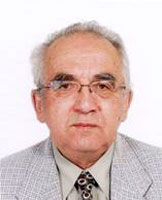
For many years, the protection zone has been the most favorite designer's tool. This fact does not require any special explanations. The zone can be easily drawn. It is even easier to check whether the protected object is located there. And if it is, the lightning arrester will provide its protection against the direct lightning strikes with the reliability that is not lower than that associated with the drawn zone. Internet offers many applications for such plotting, including 3D or even colorful zones. It is convenient and beautiful. Having received such a design, the customer will hardly be interested in the degree of redundancy. It is too bad because most often, designs contain single lightning arresters, typically lightning rods. Their protection zones represented as a circular cone are convenient for drawing. But the reliability of protection when using single lightning rods is the lowest since the customer will not be advised on that. And the point is in the increased value of too high lightning arresters. The fact that a high lightning arrester collects much more lightning discharges is markedly more dangerous. Their current, when it flows along the lightning arrester support, maintains the magnetic field almost to the full extent. And, therefore, the increased number of dangerous electromagnetic impacts on the electronic equipment of the protected object. Today, when "smart" electronic devices are widely used, the electromagnetic interference is more dangerous than the direct impact of the lightning channel.
This is the reason why we have taken the decision to write a series of small interrelated articles that should uncover the origin of the lightning arrester protection zones, clarify their forms and dimensions, tell honestly about the convenience of designing the lightning protection according to the zones and tell about all disadvantages of such design solutions.
Currently, it is hard to determine how many articles are needed for that, because it also depends on you, my dear readers. Any questions sent to address info@zandz.ru will be analyzed and taken into consideration during preparation of subsequent materials.
E. M. Bazelyan, Dr. Sc. (Eng.), Professor;
Krzhizhanovsky Energy Institute, Moscow;
recognized Russian Expert in Earthing and Lightning Protection
1. WHY DOES THE LIGHTNING ARRESTER HAVE A CONE-SHAPED PROTECTION ZONE?
The answer to this question could be obtained even in the times of Franklin and Lomonosov. The experiments have shown that the lightning is a giant long spark. A similar spark could be produced in the laboratory even in the 18th century using the induction machine that had already existed then. The best of them provided a voltage of several hundred kilovolts, which was enough to form sparks with the length of several centimeters. This physical model can be a basis for the qualitative test.
2. WHAT CAN WE EXPECT OF THE LABORATORY TESTS OF LIGHTNING ARRESTERS?
Such tests began in the 1930s. Air gaps with the length of 1 to 3 m were used. Then, in the 1960s, they grew to about 10 m, and several years ago, the experiments were conducted with the air gap lengths of up to 30 meters. As you can see, this is an old story, but the accurate solution for the task has not been obtained until present. Until now, there is no single answer concerning the rules for transition of the large-scale experiment results to the real-life lightnings. It is not really surprising. The spark discharge in the range of 10 to 30 m is still not the same as the lightning channel of several kilometers long.
3. ORIGIN OF THE PROTECTION ZONES DESCRIBED IN THE RUSSIAN REGULATORY DOCUMENTS
We have to state clearly that the protection zones used in the Russian regulatory documents are computer models. Two provisions above were used as source data in the calculation algorithm: a typical protection zone for the lightning rod with a form of a round cone, with a cone apex located in the lightning arrester axis, and the higher the required protection reliability, the lower it is located relative to the apex.
4. WHY ARE THE PROTECTION ZONES SO WRONG?
We can answer this question from the description above. Let's suppose that the entire object is located in the protection zone of a single lightning rod...
5. WHY IS A SINGLE LIGHTNING ARRESTER NOT RELIABLE?
To illustrate low reliability of a single lightning rod, a photo is often used, wherein the lightning has passed by the top of the Ostankino TV Tower for 200 m. The lightning arrester, which is the highest in Europe, does not perform its protective functions very well. To some extent, this is true for single lightning rods of any height.
6. WHAT CAN A LIGHTNING GRID BE USED FOR?
Almost any designer can say that only the lightning grid is more convenient than the single lightning rod. We do not need any calculations for it: 6 x 6 m cells for the second category protection and 12 x 12 m for the third category are used. And you have no problems at all. Actually, we have one problem, i.e. to read Instructions RD 34.21.122-87... carefully.
7. HOW TO DEAL WITH THE LIGHTNING PROTECTION GRID?
It is clear that the lightning protection grid does not provide protection for the earthed metal elements of the roof. There is no special evidence for this. To provide the protection reliability higher than 0.5, the lightning arrester must be higher than the protected object. And it must be much higher...
Related Articles:


 Lightning Protection of Large Territories: Parks, Grounds, Plant Territories. Page 1
Lightning Protection of Large Territories: Parks, Grounds, Plant Territories. Page 1
 Lightning Protection of Large Territories: Parks, Grounds, Plant Territories. Page 2
Lightning Protection of Large Territories: Parks, Grounds, Plant Territories. Page 2
 Lightning Protection of Large Territories: Parks, Grounds, Plant Territories. Page 3
Lightning Protection of Large Territories: Parks, Grounds, Plant Territories. Page 3

